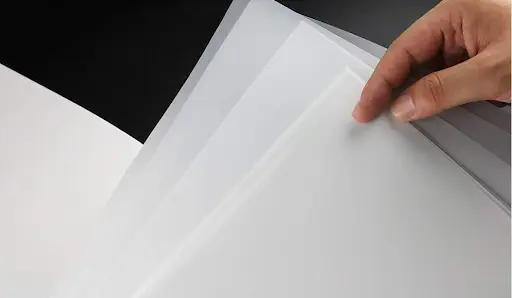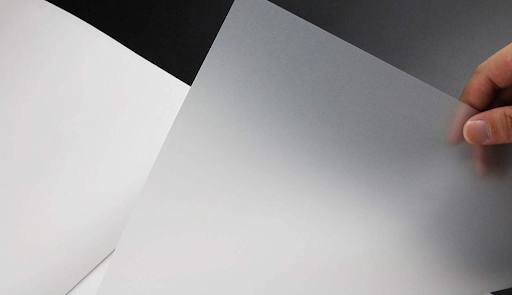Are you looking to elevate your design game and create professional-looking layouts? Have you heard of layout paper but are unsure how to use it effectively? Let me introduce you to the wonderful world of layout paper!
In this article, I will guide you through everything you need to know about layout paper – what it is, its benefits, and how to use it for your next design project. As someone who has been using layout paper for years in my own design work, I can attest to its effectiveness in creating precise and polished layouts. So if you’re ready to take your designs to the next level, let’s dive into the world of layout paper together!
So, layout paper?
Layout paper is a type of thin, translucent paper that is commonly used by designers and artists for sketching and planning out their projects. It typically has a smooth surface and comes in various sizes, such as rolls or sheets.
One of the main benefits of using layout paper is its transparency, which allows designers to easily trace over existing images or sketches without having to transfer them onto another sheet. This saves time and effort, making it an efficient tool for brainstorming and experimenting with different design ideas.
Another advantage of layout paper is its ability to withstand erasing without damaging the surface. This makes it ideal for creating multiple drafts and revisions before finalizing a design.
In addition to being used for sketching, layout paper can also be used as a tracing paper when working on more detailed designs or illustrations. Its lightweight nature also makes it easy to transport and work on-the-go.
When using layout paper, it’s important to keep in mind that the ink from markers or pens may bleed through due to its thinness. To prevent this, you can place another sheet underneath your work or use specialized pens designed specifically for use on translucent surfaces.
Overall, layout paper offers versatility and convenience for designers looking to plan out their projects efficiently while still maintaining quality results. Whether you’re designing logos, layouts for print materials, or illustrations – incorporating layout paper into your creative process can help bring your ideas to life with ease.
Understanding the Basics of Layout Paper
Layout paper is a special kind of drawing paper, cherished by artists and designers for its unique qualities. This translucent sheet allows light to pass through, making it perfect for sketching out ideas before committing them to a final piece. Picture an artist holding this delicate sheet over their intricate sketches, tracing lines with precision while seeing the underlying work clearly. The smooth surface makes it easy for pencils and inks to glide across, giving every stroke a lively quality. Whether planning a new fashion design or drafting architectural blueprints, layout paper serves as an essential tool in turning visions into tangible creations.
One of the key features that set layout paper apart is its versatility; it comes in various weights and sizes depending on the project at hand. Artists often appreciate its ability to be used with multiple mediums: from graphite pencils to markers and even watercolors when done carefully. It’s also ideal for overlay techniques, where one can layer multiple sketches without losing clarity over the original design underneath.
With all these benefits combined, layout paper becomes more than just another crafting supply; it’s like having an invisible partner guiding each creative endeavor toward perfection!
Exploring the Benefits of Using Layout Paper in Design Projects
Using layout paper in design projects can be a game changer. This special type of paper, often translucent or semi-transparent, allows artists and designers to sketch their ideas with ease. When you place it over your initial sketches or images, you can see the underlying work while adding new layers. This layering technique helps clarify concepts without losing sight of what has already been created. It’s like having a window into your creative process! Plus, its texture is perfect for pencil and ink, allowing for smooth lines and rich shading.
Another benefit of layout paper is its versatility. You can use it for various purposes such as drafting illustrations, creating storyboards, or even planning layouts for posters and brochures. The lightweight nature makes it easy to handle; you can quickly flip through pages without feeling weighed down by heavy materials. It also allows for adjustments on the fly—if something doesn’t feel right in your design, simply draw over it or move elements around until everything clicks into place.
Some key advantages include:
- Ease of Use: Ideal for quick sketches.
- Layering Capability: Enhances creative exploration.
- Easily Transferable: Great for drafts before finalizing.
The benefits of using layout paper truly enrich the design experience!
Read also: tools on finance
How to Choose the Right Layout Paper for Your Design Needs
When selecting the perfect layout paper for your design projects, it’s essential to consider a few key factors. First, think about weight and texture. Heavier papers can hold ink better and are less prone to bleed-through, making them ideal for detailed illustrations or vibrant sketches. On the other hand, lighter papers might be more suitable for quick drafts or rough ideas. The texture also plays a crucial role; smooth surfaces are great for clean lines and crisp designs while textured papers add an interesting dimension that may enhance your project’s visual appeal.
Next, don’t forget to evaluate the size of the paper you need. Larger sheets offer ample space for expansive layouts but can be cumbersome if portability is required. Consider whether you’ll benefit from standard sizes like A4 or if unique dimensions could suit your artistic vision better. Additionally, keep in mind how different types of machines will interact with your chosen paper—some printers work best with specific weights or finishes. Overall, taking time to explore these characteristics will ensure that you select layout paper that not only supports your creative ideas but elevates them into stunning visuals!

Practical Tips for Working Effectively with Layout Paper
When working with layout paper, having a few practical tips can make all the difference in your creative process. First, always choose the right type of layout paper for your project. There are various kinds available, such as translucent or heavyweight options. Each serves different purposes—translucent paper is excellent for tracing and layering designs, while heavier types provide more durability for extensive work. To keep your ideas organized, consider using light pencil sketches to outline your main concepts first; this way, you can easily erase and adjust without damaging the surface underneath.
Another key tip is to use weights or clips to secure the layout paper on your workspace. This prevents it from shifting as you draw or paint, leading to cleaner lines and a smoother workflow. If you’re layering multiple sheets together, try using transparent tape at the edges instead of permanent adhesives—it allows easy adjustments if needed! Lastly, don’t forget about lighting; good illumination helps you see details better when working with fine strokes or intricate patterns. With these simple strategies in mind, you’ll find that creating on layout paper becomes not only easier but also much more enjoyable!
You may also like: kim kardashian’s venture capital
Innovative Ways to Use Layout Paper in Different Design Projects
Layout paper, often taken for granted, can be a designer’s best friend when exploring new ideas. Its translucent quality allows artists to overlay sketches and concepts with ease. This makes it perfect for brainstorming sessions where combining elements from various designs leads to greater inspiration. For instance, consider using layout paper in fashion design. Designers can sketch multiple outfits on top of one another without losing the essence of each piece. They can visualize how fabrics interact or how colors blend together, creating a stunning palette right before their eyes.
Additionally, layout paper shines in architectural projects as well. Architects often use it to draft initial building layouts and site plans. Its clarity helps them see dimensions and proportions more clearly while allowing room for adjustments along the way. Imagine creating intricate floor plans layered with notes about light sources and material choices!
Here are some innovative uses for layout paper:
- Storyboarding animations or film scenes
- Mocking up product packaging designs
- Creating murals by layering different artistic styles
- Planning event decor layouts visually
These versatile applications highlight just how valuable layout paper is across different creative fields!

